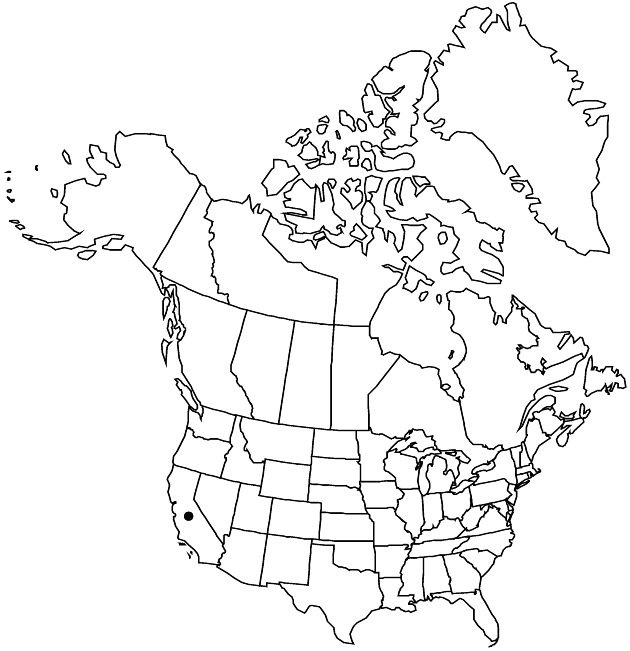familyAsteraceae
genusCentromadia
speciesCentromadia parryi
subspeciesCentromadia parryi subsp. congdonii
Centromadia parryi subsp. congdonii
Novon 9: 466. 1999.
EndemicConservation concern
Basionym: Hemizonia congdonii B. L. Robinson & Greenman Bot. Gaz. 22: 169. 1896
Synonyms: Hemizonia parryi subsp. congdonii (B. L. Robinson & Greenman) D. D. Keck Hemizonia parryi var. congdonii (B. L. Robinson & Greenman) Hoover
Leaves (and peduncular bracts) glabrous or ± hirsute, seldom glandular (sometimes with yellowish, minute, stipitate glands among eglandular hairs). Involucres 4–9 mm. Paleae lacking purple lines. Ray laminae 2.5–3(–4.5) mm. Anthers yellow or brownish. 2n = 24.
Phenology: Flowering Jun–Oct.
Habitat: Terraces, swales, flood plains, often ± alkaline sites, grasslands, disturbed sites (e.g., fallow fields)
Elevation: 0–300 m
Distribution
Loading map...

Calif.
Discussion
Of conservation concern.
Subspecies congdonii is found in the South Coast Ranges and San Francisco Bay area. Molecular and morphologic studies have indicated that the southern and northern populations are evolutionarily distinct and may warrant treatment as distinct taxa (B. G. Baldwin, unpubl.).
Selected References
None.
Lower Taxa
None.